This is the best gaming keyboard I’ve ever used — and you’ve never heard of it
The Meletrix Boog75 is, hands down, the best gaming keyboard you can buy. It's just a shame that a big chunk of gamers probably haven't heard of it.
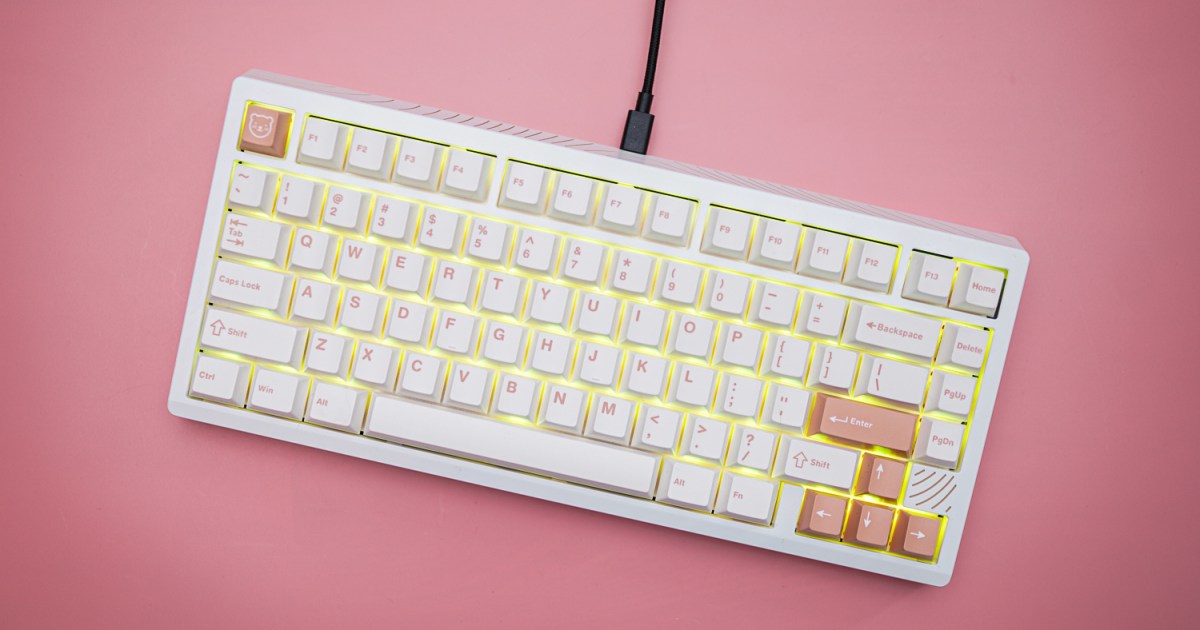
 Jacob Roach / Digital Trends
Jacob Roach / Digital TrendsI’ve covered a lot of gaming keyboards over the past couple of years. In most cases, they’re standout offerings from mainstream brands like Asus, HyperX, and Corsair. And in most cases, these companies bring some premium, enthusiast-level features to products you could find in your local Best Buy. The Meletrix Boog75 isn’t in the same class.
This keyboard has enthusiast blood running through its veins. It doesn’t come with dense RGB software, endless connection modes, or dedicated keys for media and macros. But it’s the best damn keyboard I’ve used by a mile, both for typing and gaming, and it’s cheap enough that it can go toe-to-toe with more mainstream offerings.
The Hall Effect
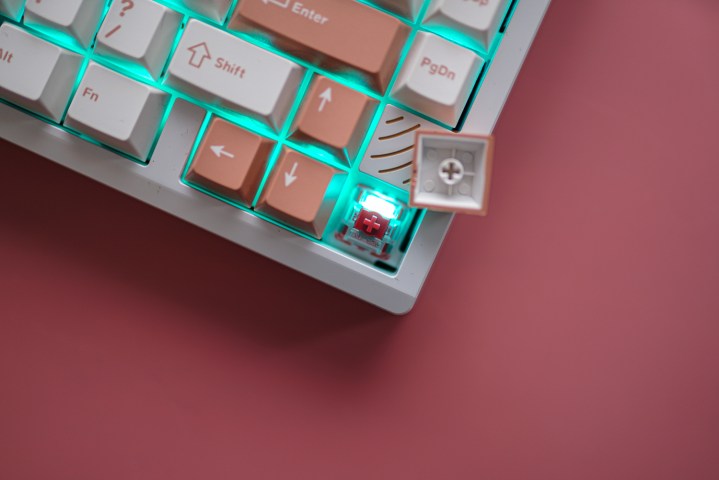 Jacob Roach / Digital Trends
Jacob Roach / Digital TrendsThe base of the Boog75 is Meletrix’s own Zoom75. If you’re tuned into the world of enthusiast keyboards, you’ve probably heard of the Zoom75. Its relatively low price and high quality has already shot it into legendary status among mechanical keyboard fans. The Boog75 is a gaming-focused take on the Zoom75, and that comes down to the switches it uses.
It uses magnetic switches, which are more commonly known as Hall Effect switches. Unlike a traditional mechanical switch, there’s a sensor at the bottom of a magnetic switch. This tracks a magnet at the top of the switch, generating a different current depending on how far the key is pressed down.
In practice, this provides some major advantages over a traditional switch. First is that you can get razor-thin actuation points. As we’ve seen on keyboards like the SteelSeries Apex Pro Mini, this switch design can get down to actuation points of 0.1mm. You barely need to touch the switch to activate an input, which can make rapid presses, particularly in games, much easier.
It’s a range, though. These switches can go down to 0.1mm and up to 4mm, and you choose where the actuation point is. There’s the competitive angle, but more importantly, this design allows you to fine-tune exactly where the switch activates.
 Jacob Roach / Digital Trends
Jacob Roach / Digital TrendsThat’s only one part of pressing a key. In a traditional switch, you have an actuation point and a rest point — how far you have to press the key down to register an input, and how far it comes back up to reset for another input. Magnetic switches are dynamic in this regard. Instead of a fixed reset point, magnetic switches use a set distance between actuations to determine the reset point.
It makes your keystrokes much more consistent. If you slam on one keystroke and barely tap on the other, it doesn’t matter — the reset point adjusts to account for the differences in keystrokes. This has obvious advantages in gaming, but it even makes a difference in typing. I’ve never missed a keystroke while using the Boog75.
Finally, magnetic switches are similar to something like analog triggers you’d find on a game controller. Keystrokes still have a set actuation point, but you can utilize the range available for special functions. For instance, the F2 and F3 keys are set to increase and decrease volume on the Boog75 by default. The amount of volume depends on how far you press the key down.
More than key switches
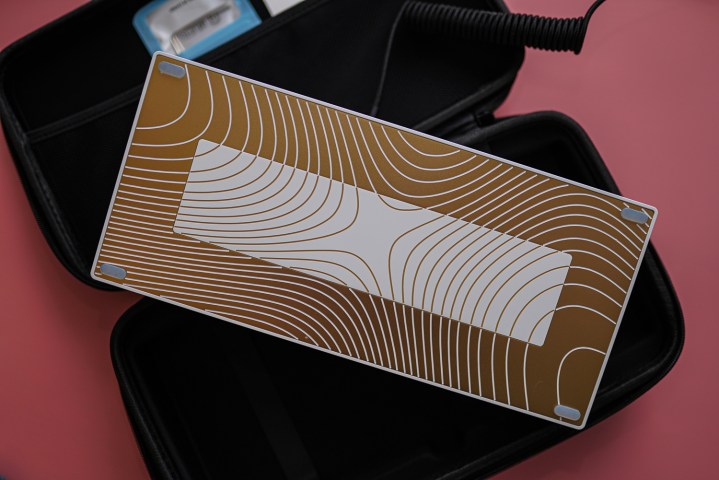 Jacob Roach / Digital Trends
Jacob Roach / Digital TrendsThe switches are the star of the show here, but the keyboard itself is excellent. For starters, it’s heavy. It weighs 4.4 pounds, due to both the metal frame and heavy bottom weight. Combined with some hefty feet on the bottom of the keyboard, it stays firmly locked in place when set up on your desk.
It looks great, too. Meletrix has two designs available. Shockwave is black and teal with accents on the keycaps and digital traces etched on the edges. I have the Induction Coil design, which goes for a white-and-beige aesthetic with wispy etched lines across all surfaces.
The look and feel is worthy of a keyboard that could easily cost $500 or more, but the Boog75 doesn’t. Either of these designs costs $230, and that includes the keycaps, switches, a carrying case, and a coiled braided USB-C cable. That’s the same price as a Corsair K70 Max and $30 more than a SteelSeries Apex Pro.
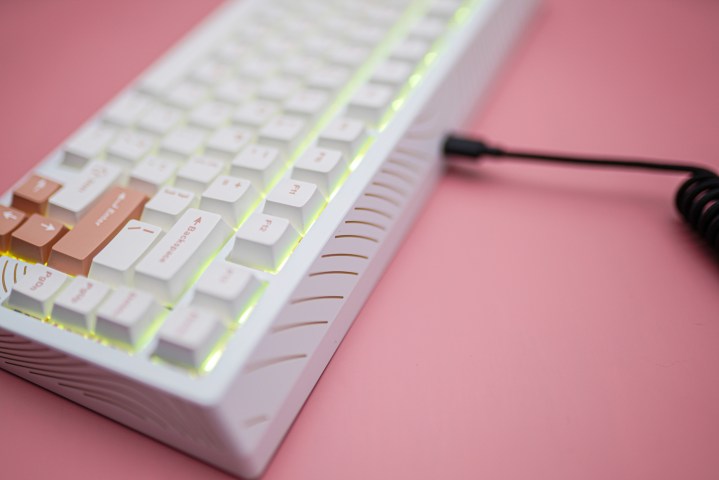 Jacob Roach / Digital Trends
Jacob Roach / Digital TrendsUnder the thick double-shot keycaps, you’ll find the magnetic switches. In the prebuilt version, these are Gateron KS37B switches, but you’re free to swap in your own, assuming you’re adding in two-pin magnetic switches; regular three-pin or five-pin switches won’t work.
Meletrix uses a gasket mount, placing 12 rubber gaskets around the edge of the switch plate to dampen the typing feel. A gasket mount is essential, and it’s no surprise that Meletrix is using one here. Along with a gasket mount, there’s board foam to absorb the ping you normally get with a metal frame.
The result is a keyboard that sounds as good as it feels. There’s the characteristic thonk to keystrokes, but it’s that sound combined with the silky response of the switches that really makes it shine. The Boog75 is leagues ahead of even my custom Glorious GMMK Pro, which I’ve tweaked nearly every aspect of. It’s hard to overstate just how much of a leap the feel of this keyboard is compared to even higher-end mainstream keyboards like the Asus ROG Azoth.
Outside of an insanely premium keyboard like the Cyberboard R2, this is about as nice as it gets for any reasonable amount of money. You might not be able to pick up the Meletrix at a local retailer, but going out of your way to order it directly from Meletrix is well worth it.
A couple of small downsides
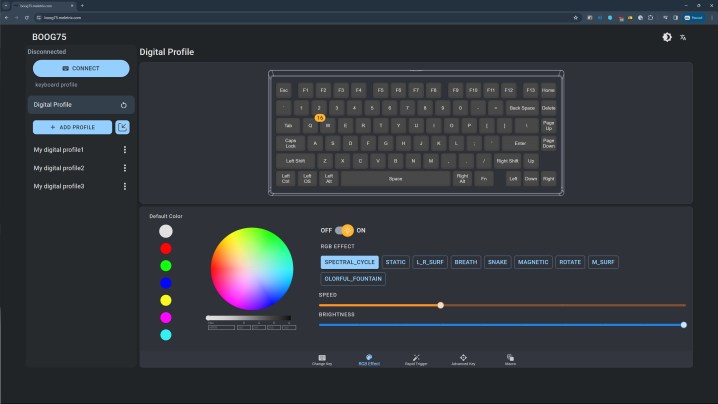 Jacob Roach / Digital Trends
Jacob Roach / Digital TrendsI love this keyboard, but it isn’t perfect. You don’t get a lot of the creature comforts you find with more mainstream options. Most notably, this is a wired keyboard. Meletrix sells a wireless version of the Zoom75, but the Boog75 is only available in a wired version. I suspect that has to do with the magnetic switches, but it’s something to keep in mind regardless.
The software experience isn’t on the level of mainstream options, either. There isn’t a local app. Instead, you can access all of the keyboard’s settings through your browser. There’s per-key RGB lighting, some limited preprogrammed RGB effects, and controls for the actuation point of each switch. You can even take advantage of the magnetic switches to program four different actions for different points of the keystroke — which is useful for extra function keys.
There are macros here, too, as well as rebindable keys, where you can add shortcuts like a calculator to certain keys.
The main problem is that it’s in your browser. There are three hardware profiles that you can store on the keyboard itself, but you’ll have to bookmark and pull up the website whenever you need to remember keys or make adjustments. There isn’t a connection to your local PC, either. For instance, you can’t program a macro to launch a certain application, or automatically swap profiles when launching a certain game.
I don’t put a ton of value on these extra features because I don’t use them very much. However, it’s definitely something to keep in mind. If you’re a macro power user that wants to launch half a dozen apps with a few keystrokes, your options are limited here.
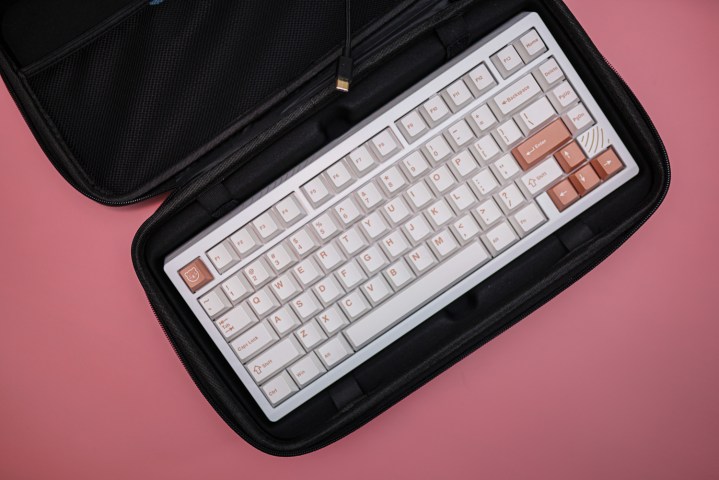 Jacob Roach / Digital Trends
Jacob Roach / Digital TrendsEven without wireless and some fairly basic software, the Boog75 is incredible. At $230, it absolutely trounces the higher end of the spectrum from mainstream brands like Corsair, Asus, and HyperX, and it even manages to outclass the GMMK Pro — at least before some serious modification. My biggest concern is that Meletrix won’t be able to keep it in stock. That’s what we saw with the Zoom75 — all versions of that keyboard are currently sold out.
If you’re thinking about picking up a Boog75, I’d do so quickly — they aren’t going to last long.

 Troov
Troov 
































